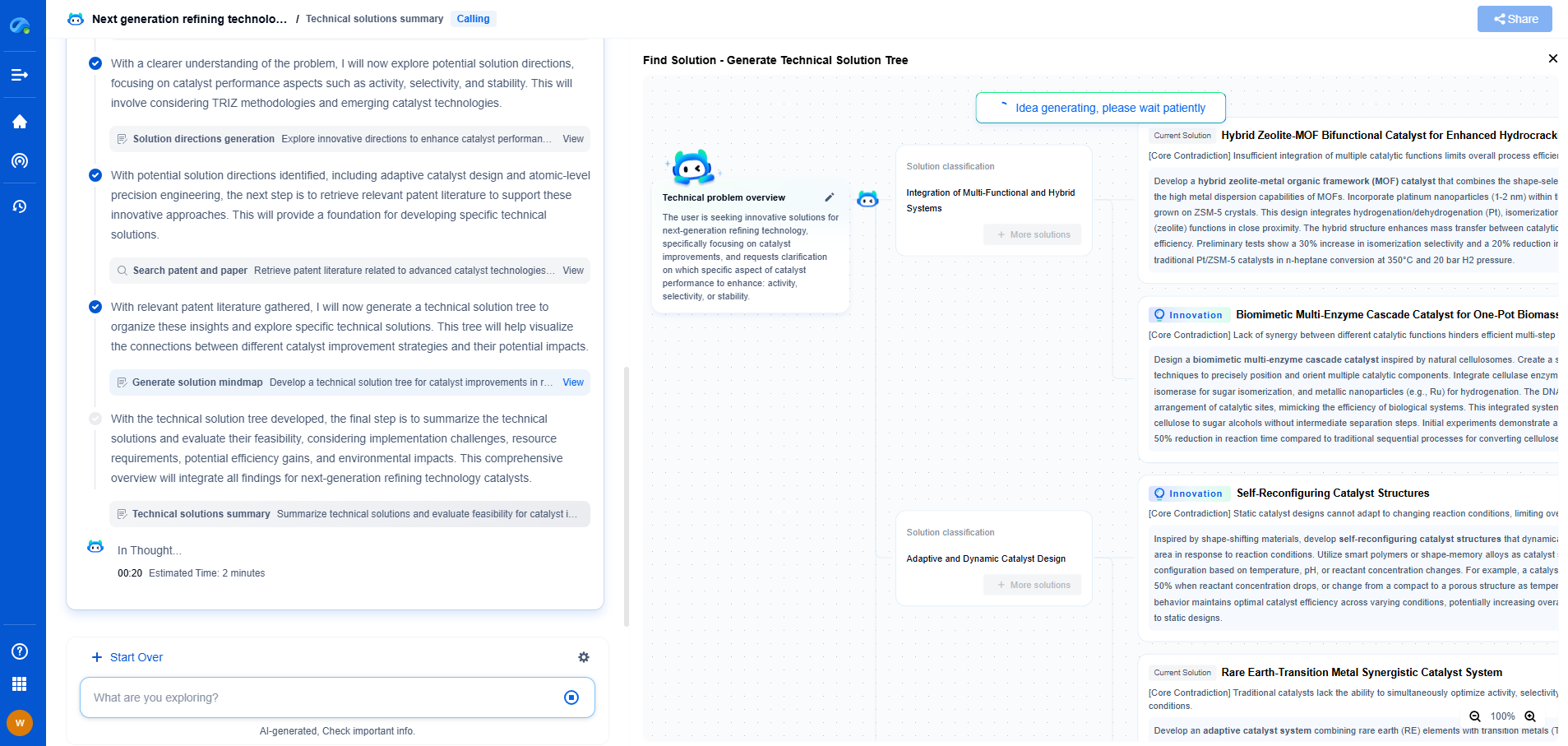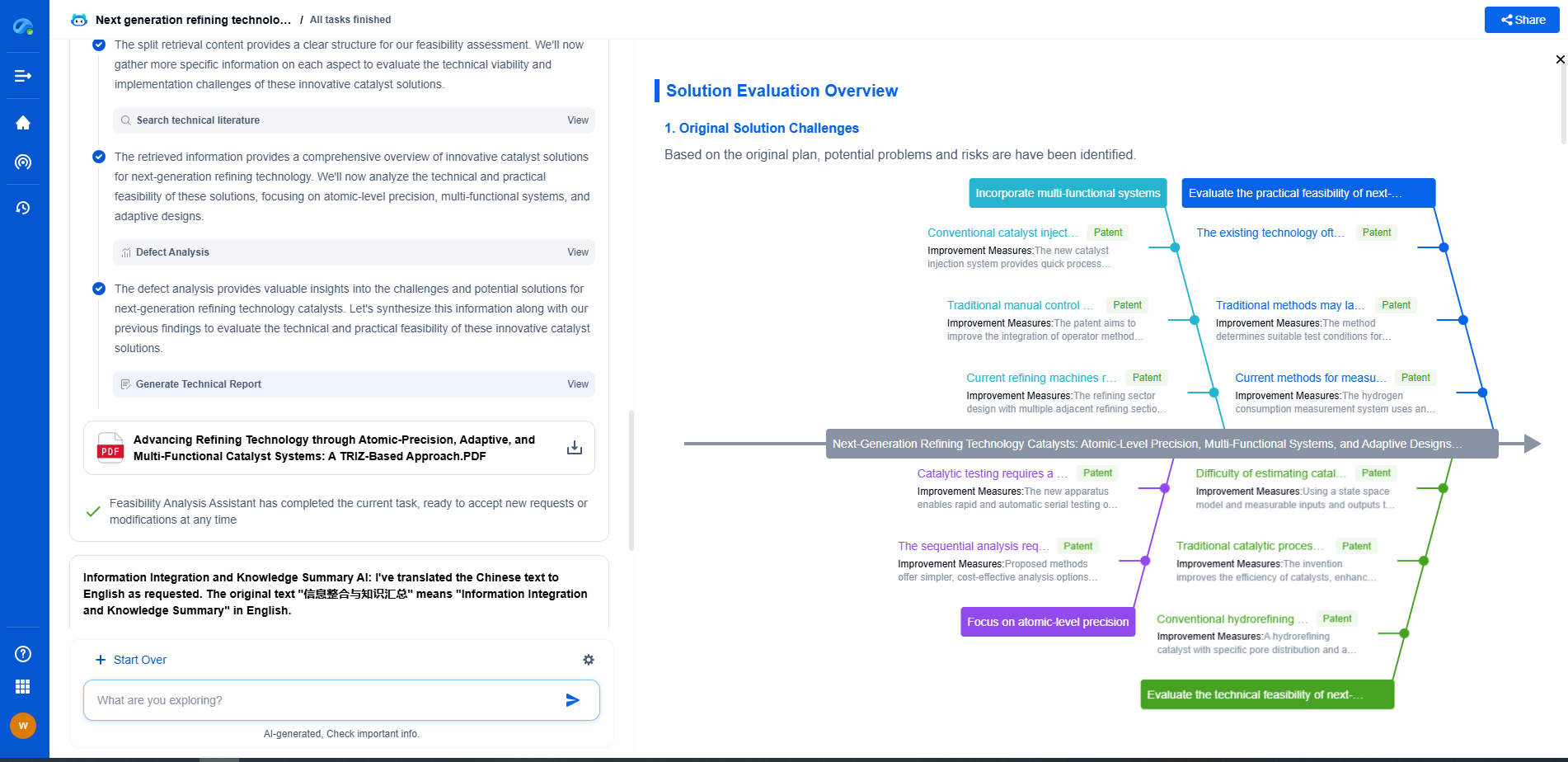Fluid catalytic cracking (FCC) is a key refinery process that converts heavy petroleum fractions into lighter, more valuable products like gasoline and olefins. It works by vaporizing feedstock and injecting it into a reactor with a finely powdered catalyst, typically zeolite-based. The catalyst breaks long hydrocarbon chains into shorter ones at high temperatures (around 500°C). After the reaction, the catalyst is separated, regenerated by burning off coke deposits, and recycled. FCC optimizes yield and efficiency in modern refining.
The FCC Process Overview
FCC is a chemical conversion process utilizing catalysts to crack large hydrocarbon molecules into smaller ones. The process begins with the pre-heating of heavy vacuum gas oil or atmospheric gas oil in a furnace before sending it to the FCC unit. Here, the feedstock encounters a powdered catalyst suspended in a stream of air or steam, causing the long-chain hydrocarbons to break down.
Role of Catalysts
Catalysts are central to the FCC process, enhancing the rate of chemical reactions without being consumed. In FCC units, zeolite-based catalysts are commonly used due to their high stability, activity, and selectivity. These catalysts facilitate the cracking reactions, allowing the transformation of heavier fractions into lighter and more valuable products. The catalyst's properties, such as pore structure and acidity, significantly affect the reaction pathways and product distribution.
Cracking Reactions
The cracking reactions in FCC primarily involve carbon-carbon bond cleavage, leading to a mixture of hydrocarbons ranging from gases to liquids. During the process, heat and pressure conditions promote the breakdown of larger molecules into smaller, more volatile compounds. The primary reactions include thermal cracking, catalytic cracking, and hydrogen transfer, each contributing to the creation of desirable products like gasoline, diesel, and olefins.
Regeneration of Catalysts
A unique feature of FCC is the regeneration of catalysts. During cracking, the catalyst becomes deactivated due to coke deposition—a carbon-rich residue. To restore its activity, the catalyst undergoes regeneration by burning off the coke in a controlled environment, typically using air. This regeneration process is integral, as it enables the continuous operation of FCC units by cycling the catalyst between reaction and regeneration zones.
Product Separation and Recovery
After cracking, the resultant mixture is directed to a fractionation column where products are separated based on their boiling points. This process involves the condensation of lighter fractions into liquid forms, while heavier fractions remain as vapors. Gasoline and other light products are collected from the top of the column, while heavier products like cycle oils are drawn from the bottom.
Environmental Considerations
FCC processes have evolved to address environmental concerns, particularly those related to emissions and waste management. Modern FCC units incorporate advanced technologies to minimize pollutants such as sulfur and nitrogen compounds. Additionally, innovations in catalyst formulation and process design aim to enhance energy efficiency and reduce the carbon footprint of refining operations.
Conclusion
Fluid catalytic cracking remains an indispensable component of petroleum refining, providing essential products that fuel transportation, power industries, and contribute to various chemical processes. Its efficiency in converting heavy hydrocarbons into lighter fractions underscores its significance in meeting global energy demands. Understanding FCC not only reveals its technical complexities but also highlights its vital role in shaping the future of energy production and sustainability.
This article is purely focused on explaining the workings of fluid catalytic cracking, offering insights into its process, components, and importance in the refining industry.
How does fluid catalytic cracking (FCC) work?
JUN 19, 2025 |
Discover Patsnap Eureka: AI Agents Built for Scientific Innovation
Whether you're designing the next generation of refining technologies or analyzing catalysts and process flows, keeping up with rapidly evolving research and IP data in petroleum processing is no easy task.
Patsnap Eureka, our intelligent AI assistant built for R&D professionals in high-tech sectors, empowers you with real-time expert-level analysis, technology roadmap exploration, and strategic mapping of core patents—all within a seamless, user-friendly interface.
Ready to accelerate your innovation process and make smarter, faster decisions? Discover Patsnap Eureka today and unlock the full power of confident, AI-driven innovation.
- R&D
- Intellectual Property
- Life Sciences
- Materials
- Tech Scout
- Unparalleled Data Quality
- Higher Quality Content
- 60% Fewer Hallucinations
Browse by: Latest US Patents, China's latest patents, Technical Efficacy Thesaurus, Application Domain, Technology Topic, Popular Technical Reports.
© 2025 PatSnap. All rights reserved.Legal|Privacy policy|Modern Slavery Act Transparency Statement|Sitemap|About US| Contact US: help@patsnap.com

